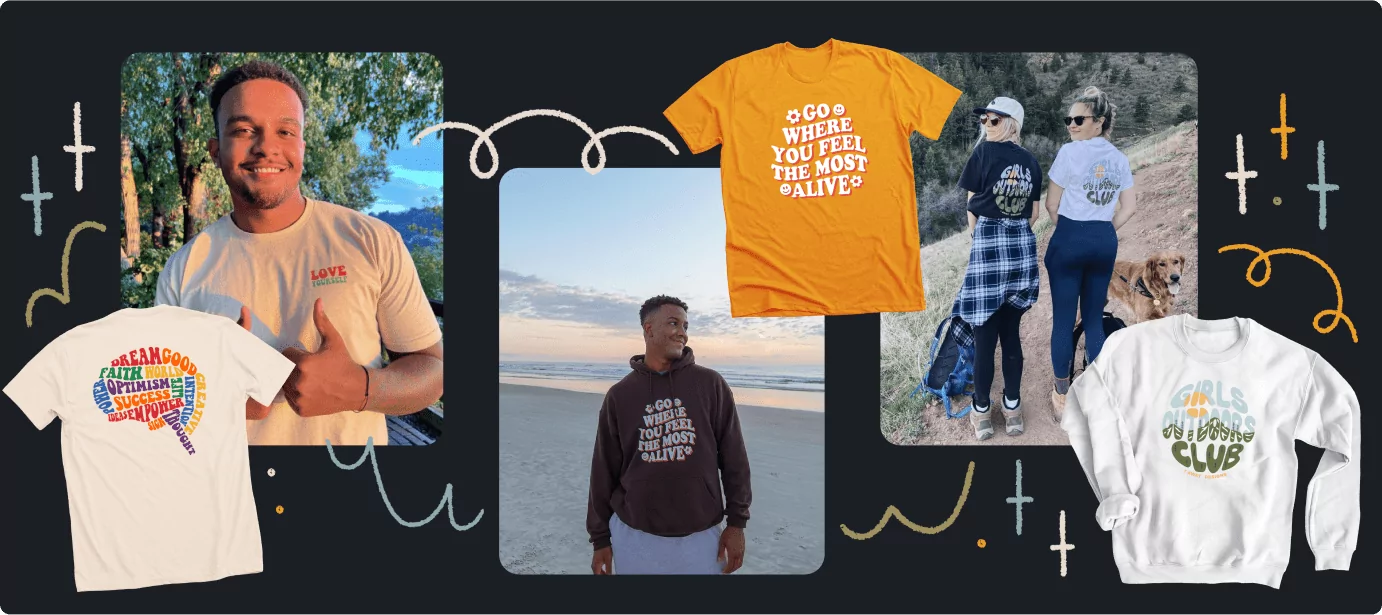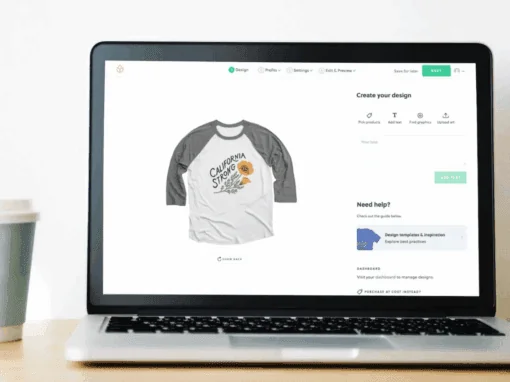In 2024, the global custom t-shirt printing market was valued at $5.16 billion, and it’s expected to grow by 11.5% by 2030. The massive success of custom merch aligns with the rising popularity and desire for custom apparel that communicates the wearer’s personal beliefs, values, and interests.
Whether you’re a musician, YouTuber, a nonprofit, or a local business, you can take advantage of this trend and earn revenue from custom merch. This guide explores all the basics you need to know to design and sell premium custom merchandise your fans and supporters will love.
Let’s begin by exploring the top benefits of selling custom merch—including additional revenue.
Key Takeaways
- Creating custom merch is a powerful way to drive additional revenue, boost brand awareness, and strengthen connections with your community.
- Explore the entire creative process, from developing your brand identity to choosing the right products.
- Effective promotion is crucial—get tips for selling your items through an online store, social media, and community events.
Start selling merch the easy way on Bonfire
No inventory required • Easy setup • Keep 100% of the profits
What are the benefits of making custom merch?
Consider the last time you purchased branded merchandise, whether it was your favorite character’s lightsaber or a mug with your favorite show’s logo. Why did you decide to make that purchase?
Most of the time, people purchase merchandise to visually express their interests and values, show support for the causes or creators they care about, and forge connections with others. You can meet this need among your followers or supporters by providing merch. In turn, you’ll experience benefits like:
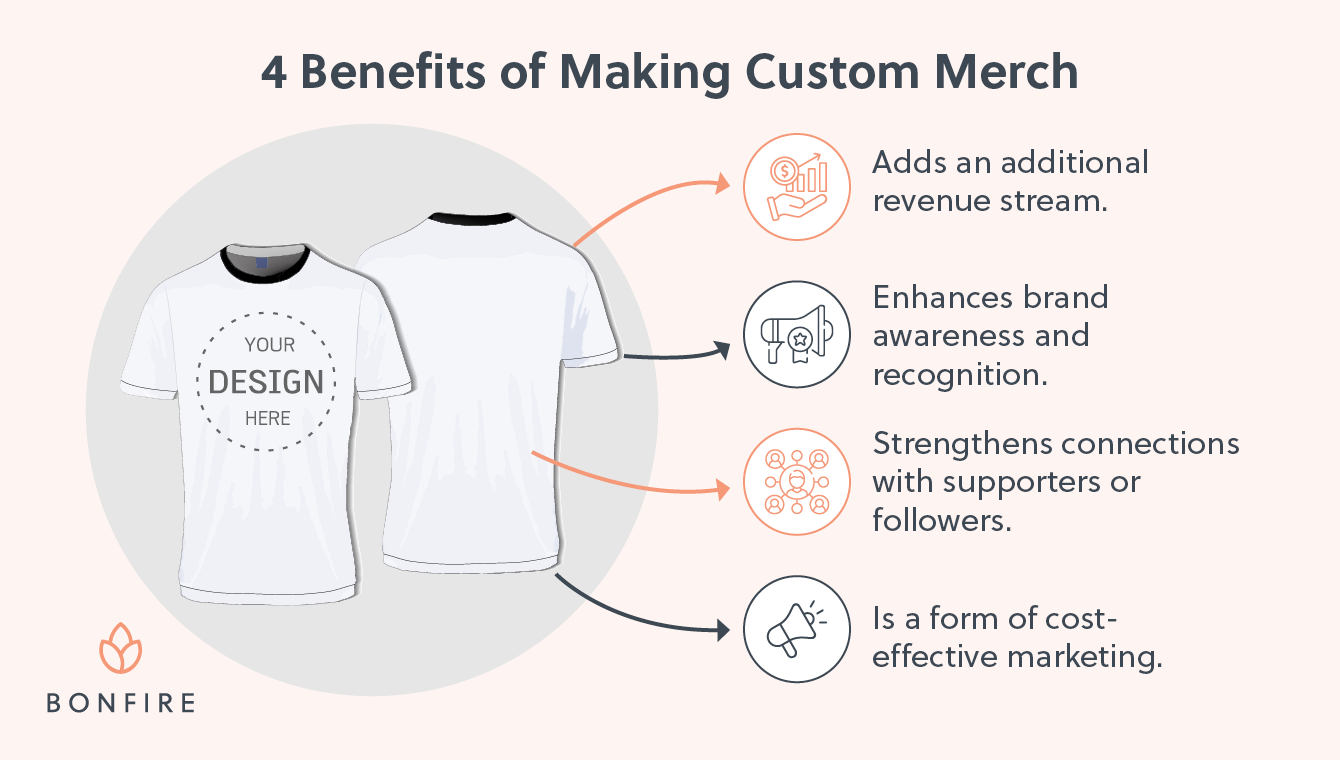
- An additional revenue stream: Merchandise sales can drive significant revenue. You’ll also improve your financial stability by diversifying revenue sources—in other words, you won’t rely too heavily on just one or two.
- Better brand awareness and recognition: Create designs that visually communicate your brand. Not only will supporters be reminded of your brand each time they see the merch, but they’ll serve as a walking advertisement for your organization or online presence.
- Stronger connections with supporters or followers: Encourage your audience to post photos with the merch and connect with other members of your online community. This way, you’ll engage your audience and enhance loyalty by building a sense of community through merch sales.
- Cost-effective marketing: As mentioned above, people become mobile billboards for your brand when they wear your merch in public, making this an affordable way to market. However, you’ll need to choose a reputable custom merchandise platform with fair pricing to maximize your profits.
Keep in mind that to reap these benefits, you must offer products your audience will want to purchase. Later in the guide, we’ll discuss how to identify their needs and interests so you can offer merch that (practically) sells itself.
Case Study: Meridian Library Foundation
The Meridian Library Foundation, a Bonfire client, is a nonprofit that helps fund and advocate for Meridian, Idaho’s public library. In 2020, the nonprofit began looking for additional ways to drive funding virtually, discovered Bonfire, and launched its first custom apparel campaign.
The foundation launched its Read Banned Books campaign in 2022 in response to increased scrutiny and attacks on libraries. The foundation sold merch listing the titles of banned books to raise money.
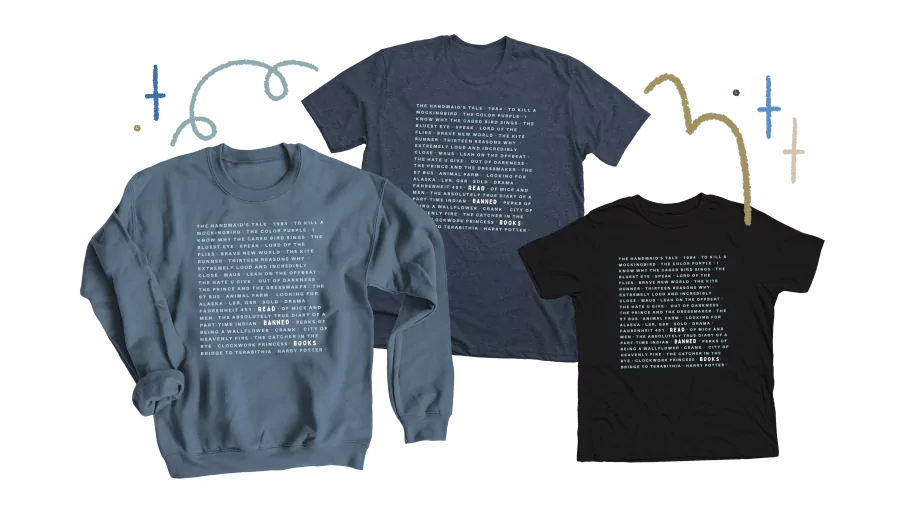
The campaign quickly went viral on TikTok when a popular influencer posted about the new design, and her followers felt motivated to support the cause. The foundation was inundated with calls and emails asking how to buy the merchandise. They also partnered with the influencer who started it all, and she continued to post updates to keep her followers engaged.
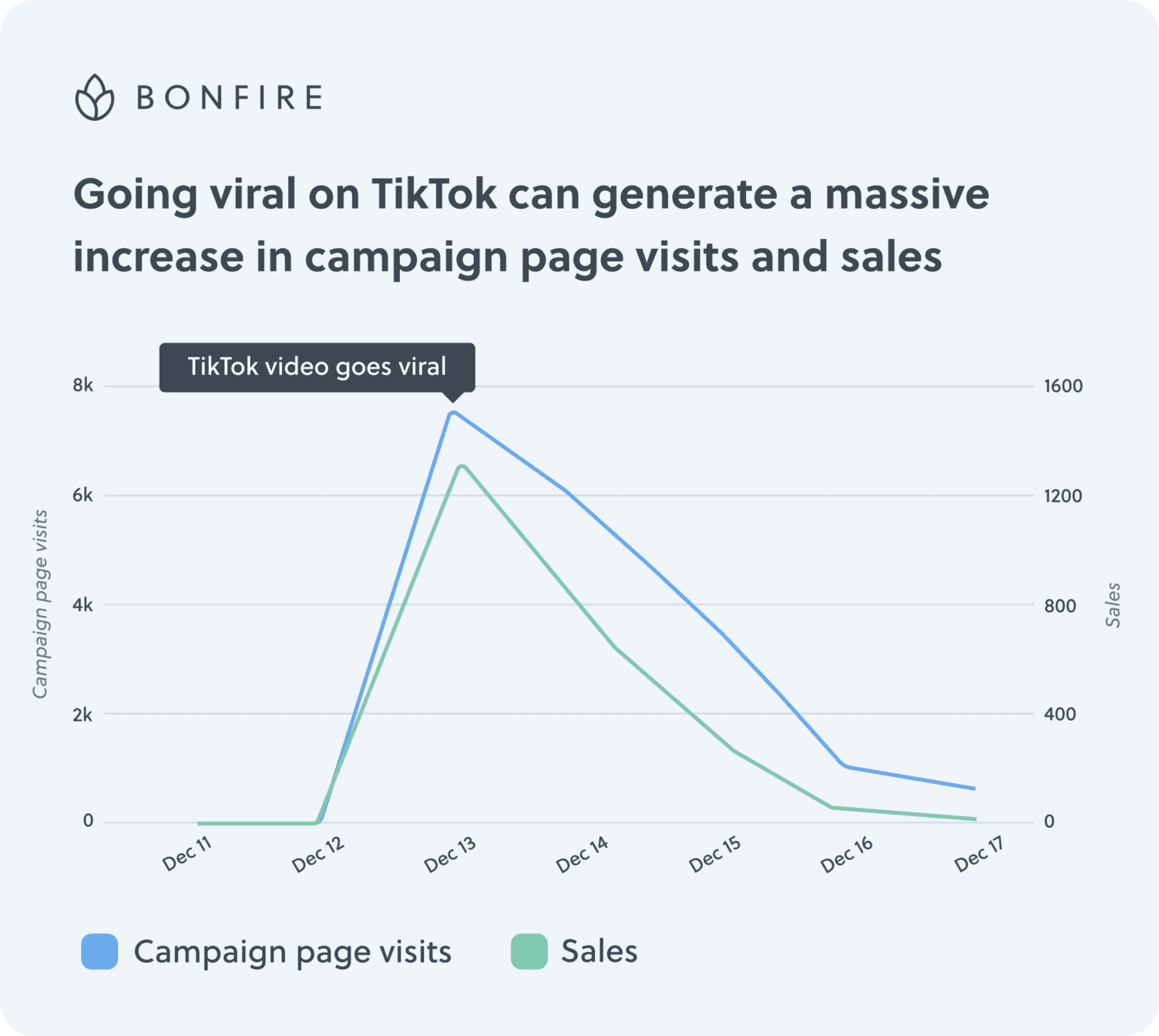
In just a few days, the campaign raised over $60,000 in shirt sales and donations, which fully funded Early Literacy & Sensory Installations at a new library branch. And these supporters didn’t forget about the foundation. When a small group attempted to dissolve the Meridian Library District, they rallied together to support the libraries and raise an additional $15,000—all with the Read Banned Books design serving as a symbol of support and unification.
The foundation is still working to raise the funding needed to support libraries in Meridian and provide equitable, accessible experiences. Using Bonfire’s platform, they’ve already raised over $100,000.
How can I create my own merch?
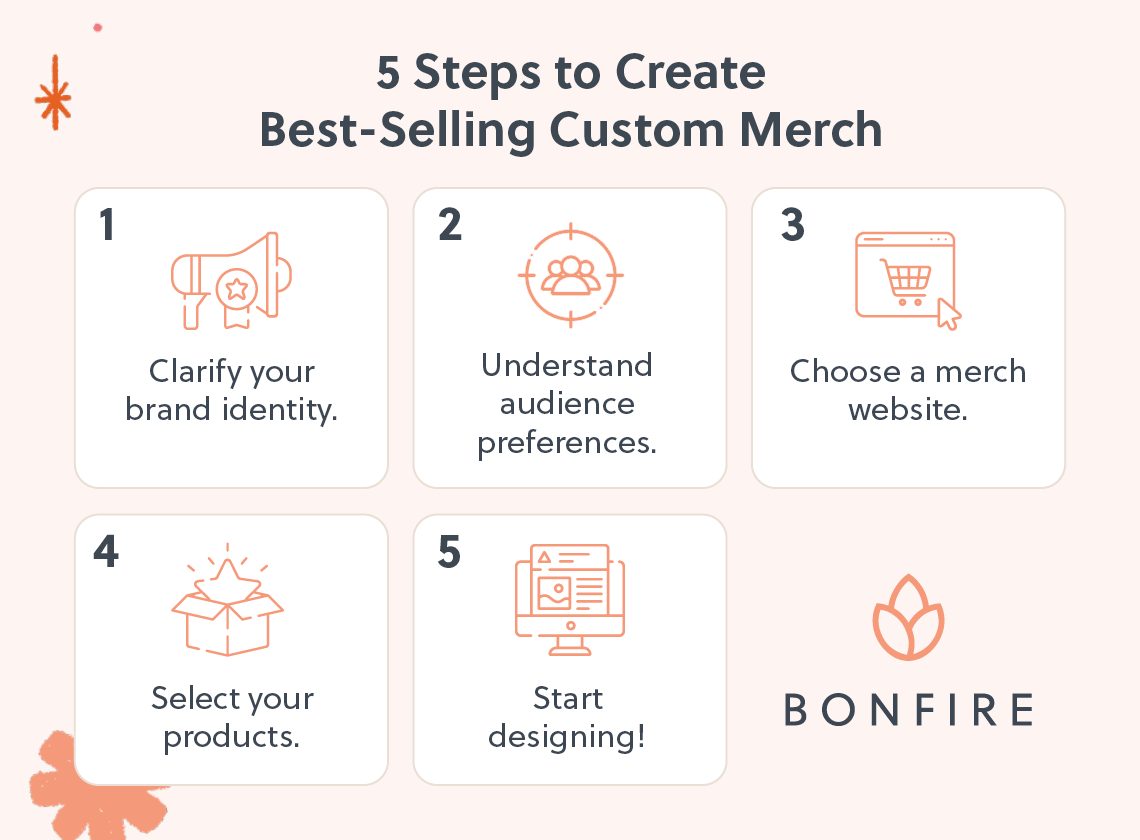
1. Clarify your brand identity
Your brand identity includes all of the visual elements you use to distinguish yourself or your organization from competitors. Your brand personality, behavior, and mission also contribute. For the sake of custom merch design, we’ll focus on the visual side of brand identity, which typically includes:
- Your logo
- Specific brand colors
- Imagery related to your brand
- Specific fonts
- Slogans or other key messages associated with your brand
If you’ve been marketing yourself for a while now, you likely already have an established brand. But if you’re just starting out, you might still be developing your brand identity. Either way, it’s valuable to spend time thinking about what makes your brand unique. This will help you clarify your vision and overall aesthetic, ensuring your merch designs accurately reflect your brand.
Start by putting together a brand guide that clarifies the exact logo, colors, and fonts you’ll use in any branded content moving forward—these are the elements you’ll need when designing your merch.
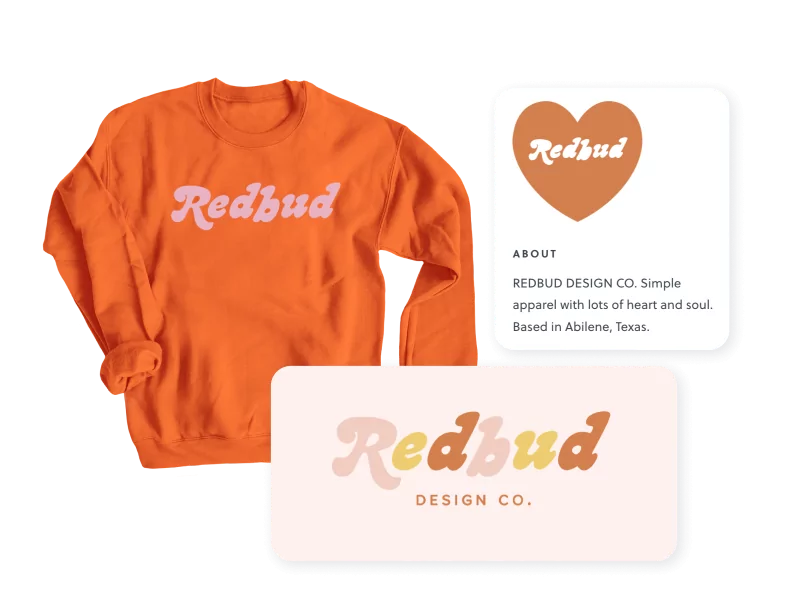
2. Understand audience preferences
Now, it’s time to focus on your audience and get to know them better. Your audience may consist of your followers, fans, supporters, or customers. Making merch they will truly love—and want to purchase and wear—requires digging deeper into who your audience is and what they want.
Start by asking the following questions:
- Who do you hope will buy your custom merch?
- Where and how do you typically interact with this audience?
- What does your audience value about you and your work?
- What other common interests or values do your audience members hold?
- Are there any running motifs, jokes, or catchphrases your audience loves and would enjoy seeing featured on your merch?
After you’ve answered these questions for yourself, consider asking your audience questions directly to learn even more! Here are a few ways you can do that:
- Create polls on Instagram and other social media platforms. Ask your followers to help you make design decisions. Think “this or that” questions that require them to vote on their favorite out of two options at a time. Ask questions like, “Which color do you like better? Which font do you prefer? Which shirt style would you wear?”
- Prompt your audience to answer questions in Instagram Stories. For example, you might create a post that says, “If I were to create custom merch, would you buy it? I’m designing custom merch—what styles would you like to see? What was the last t-shirt you bought?”
- Put your audience in the driver’s seat. Depending on your relationship with your audience, it might make sense to give them even more creative control. Giving them a role in the design process can foster psychological ownership and emotional attachment to the products, making them more likely to buy your merch. Consider holding a design contest where supporters can submit their own designs or simply allowing them to send you their creative concepts.
Collecting data on what your audience likes and dislikes is helpful for designing custom merch and is also helpful for maintaining audience engagement over time. Your audience will notice the time you spend getting to know them and appreciate it.
3. Choose a merch website
Start by picking a merch platform that fits your needs. There are several options available:
- Local print shops: Look for local vendors in your area that provide printing services. Not only will you be supporting your local economy, but they may have unique offerings and more personalized customer service that you won’t receive from large companies.
- Print-on-demand partners: Simply add your design to a product, such as a t-shirt, and your print-on-demand partner handles the rest. When you make a sale, they’ll print and ship the product. Then, you receive your percentage of the profits.
- Online services: Some agencies specialize in designing custom merchandise for influencers, online creators, musicians, and brands. They offer various services, from creating the designs to helping their clients find manufacturers. While this can be a good option for larger brands, you’ll need to pay close attention to agreements or contracts—for example, who owns the intellectual property, and how long are you committing to the partnership?
As a print-on-demand partner, Bonfire takes care of the printing and shipping so you can focus on connecting with your supporters. No matter how you choose to sell your merch, each option is easy to set up, user-friendly, and designed to maximize sales. For example, launch a simple online campaign, fundraise for your organization or on behalf of another cause, or order a batch of custom shirts to sell and distribute on your own.
We also have a growing number of free features and tools to help you sell your merch wherever you go.
- YouTube Merch Shelf integration
- Linktree integration
- Promo codes
- Custom online stores
- High-quality products
- No inventory or platform fees
- Free design tools and templates
- Marketplace listings to boost sales
Whichever option you choose, let your community know the details, so they know when to buy!
Helpful Tip: Sellers have the most success when they spread their campaign launches out – we recommend waiting 90 days between campaigns. If you plan to launch multiple campaigns, use the Schedule Campaign feature to schedule your merch drops in advance!
4. Select your products
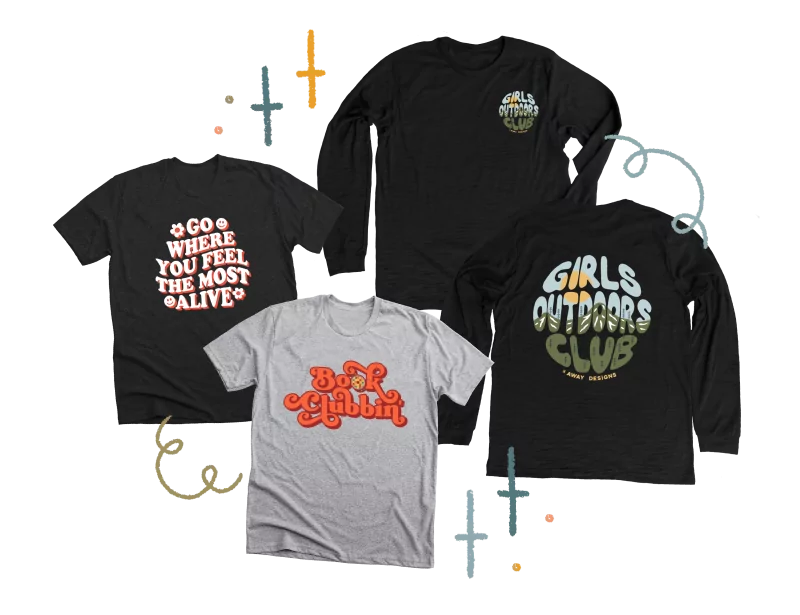
Bonfire offers an extensive catalog of high-quality products that you can customize with your designs, including:
- T-shirts
- Sweatshirts
- Hats
- Mugs
- Tote bags
- Toddler and baby clothes
- Activewear
- Notebooks
- Yard flags
- Duffel bags
- Aprons
- Jackets
- Bandanas
- Pants and shorts
Use what you know about your audience to choose what kinds of items you’ll sell. What are their needs and preferences, and what can you offer to meet those needs? Additionally, consider external factors like current design trends, your region’s climate, and the seasons to ensure your designs are timely and relevant.
5. Start designing
Once you’re ready to create your design, you have a few options:
- Design the shirt yourself using your chosen merch website’s design tool
- Hire a graphic designer to create the design for you
- Use a pre-made template, tweaking the details to make it your own
If you’ll be designing your own merchandise, these tips can help you get the ball rolling:
- Look around for inspiration. Get to know the possibilities for your merch and learn what you like. Gather around five designs for inspiration, noting the specific design elements you like.
- Consider the rule of thirds. This basic design principle divides your design into a three-by-three grid, asserting that the most important design elements should be placed along the lines or intersections of the grid. Keeping this rule in mind will help you create balanced, interesting compositions.
- Learn typography basics. Familiarize yourself with basic terminology and the kinds of typefaces (serif, sans serif, script, blackletter, decorative, etc.). Typography can be a powerful visual tool, so don’t neglect it.
- Keep color contrast in mind. In most cases, it’s best to use lighter colors on dark backgrounds and darker colors on lighter backgrounds. For example, white text will be difficult to see on a yellow shirt. Additionally, make sure colors are as true to your brand as possible by using their specific hex color codes when possible.
To learn more about the design process, explore our comprehensive, step-by-step guide to designing your custom merch.
How can I promote and sell custom merch?
Create an online merch store
Create an online store to engage your community, securely accept a variety of payment types, and achieve global reach. An online store displays all of your items in one convenient location to make shopping easy for your supporters. You can easily share links to your store to promote your custom merch.
When selecting your merch website, look for one that offers customizable online stores. This way, you can add a description of your brand, specific colors, your logo, eye-catching images, and other branded elements to the virtual storefront. Then, add your campaigns to the store—remember, you can reorder or expand campaigns as needed.
Make it easy to find
Using simple links that prioritize the user experience will make it easy for your followers to directly access your merch store.
We recommend using a link-in bio tool like Linktree so you can link to your profile across all of your platforms. Then, you can use our free Linktree integration to display and sell your merch directly from your profile.
If you don’t have a Linktree profile yet, just create a free account, then connect your Bonfire store to your profile once it’s published. Once you’ve enabled the Linktree integration, add your unique Linktree URL to all of your bios, and be sure to tell your community to visit your “link in bio” to check out your Bonfire store!
Leverage social media
The Meridian Library Foundation is a great example of how social media can transform the trajectory of your merch campaigns. Here are a few quick pointers for effective social media marketing:
- Use scheduled posts. Create scheduled posts on different social media platforms following a distinct beginning, middle, and end pattern. For example, if you plan on selling your merch for a limited time only, promote it before it launches to build anticipation, again around the middle of the run to keep the excitement going, and finally towards the end to encourage last-minute sales.
- Create engaging visuals. Include photos of yourself, friends, and family wearing the merch. If your store offers different apparel styles, showcase each look. In the age of constant scrolling, make sure your visuals are eye-catching—think bold colors, clear imagery, and text that’s easy to read.
- Vary the content. Avoid becoming too repetitive or pushy. Find ways to incorporate your merch into your usual content and posts for an authentic, natural. For instance, wear your merch in your YouTube videos or share customer photos in your Instagram Stories or on your main feed.
- Encourage engagement from your followers. The biggest strength of social media as a promotional tool is that your audience can visibly and directly engage with your campaign in real time. Get followers involved by asking them to share your posts with their followers or post photos of them wearing the merch using a special hashtag.
These promotional strategies are often referred to as circles of engagement. Promotional engagement strategies allow your followers to get directly involved (and stay involved) with your campaign by generating a cycle of interest, participation, and purchases that continually attract new customers.
Engage in community events and partnerships
Your community—whether it exists online or in-person—is the group that’s most likely to purchase your merch. Go beyond social media posts and engage deeply with your community to encourage your audience to support you.
Look out for any upcoming events you can attend. This will increase your visibility and show that you’re a dedicated member of the community. Participation can look different for everyone. If you run a small business, you might set up a booth at monthly market days. If you’re a local musician, you could play at a festival or school dance.
Consider ways to connect with your online community, too. Follow the Meridian Library Foundation’s lead and form partnerships with influencers in your space. Regularly have conversations with the online community and support its members when you can.
Inspire a sense of urgency
It’s likely that you’ve seen an ad in the past, strongly considered purchasing the product or service, and then promptly forgot about the ad once you scroll past it. To reduce these lost opportunities, leverage urgency to motivate your audience to take action now.
Here are some ways to inspire a sense of urgency:
- Run limited-time promotions. Offer discounts or buy-one-get-one deals for a limited time. Share the end date of the promotion with your audience, urging them to take advantage of the sale before it’s gone.
- Offer limited drops. Sell a special design for a limited time only. For example, you might partner with a popular influencer or artist in the space. Or, perhaps you bring back a well-loved, retired design for just a few weeks.
- Explain why you need the funds. If you’re selling merchandise to fundraise for your cause or on behalf of another organization, explain why you need the funding as soon as possible. For example, perhaps an animal shelter receives new kittens and puppies every day, and they desperately need funds to keep every animal fed, sheltered, and healthy.
You should always use this strategy ethically, especially if you’re fundraising. Never lie about why the funds are needed or how they’ll be used, and avoid embellishing or sensationalizing real stories for the sake of merch sales.
Launch targeted ads
If you are a creator or organization with a significant budget, consider investing in targeted paid ads to get your merchandise in front of more eyes.
Use targeted ads strategically to get the most out of your investment. When deciding which platforms to partner with for your ads, focus on the ones your followers use regularly and where you most often interact with them.
After an initial push of targeted ads, many creators can rely on other effective marketing strategies, such as word-of-mouth and ongoing audience engagement.
Additional Resources
Designing and selling custom merch is an excellent idea for all creative individuals. From garage bands to local businesses to YouTubers to nonprofit organizations, designing custom mech is a smart way to connect with your fans, promote your brand, and earn money while at it.
Bonfire streamlines the process, reduces stress, and helps you maximize your profits while providing high-quality items. Start driving funds and get started today!
To learn more about selling custom merch, check out these additional resources from our blog:
- 17 Fundraising Products You Should Be Selling. Discover popular ways to fundraise by digging into this top list of products.
- What You Need to Know About Online Stores for Nonprofits. To sell your merch, you’ll need a dedicated online store. Explore the basics and the options Bonfire has to offer.
- The 12 Best Fundraising Sites for Individuals & Nonprofits. Learn about the top fundraising platforms on the market and choose the one that’s right for you.
Start selling custom merch the easy way with Bonfire

Joe is the Director of Growth Marketing at Bonfire and has over 8 years of experience in the custom merchandise and apparel fundraising space. His favorite shirt color is Kelly Green, and he prefers hoodies over crewneck sweatshirts.


